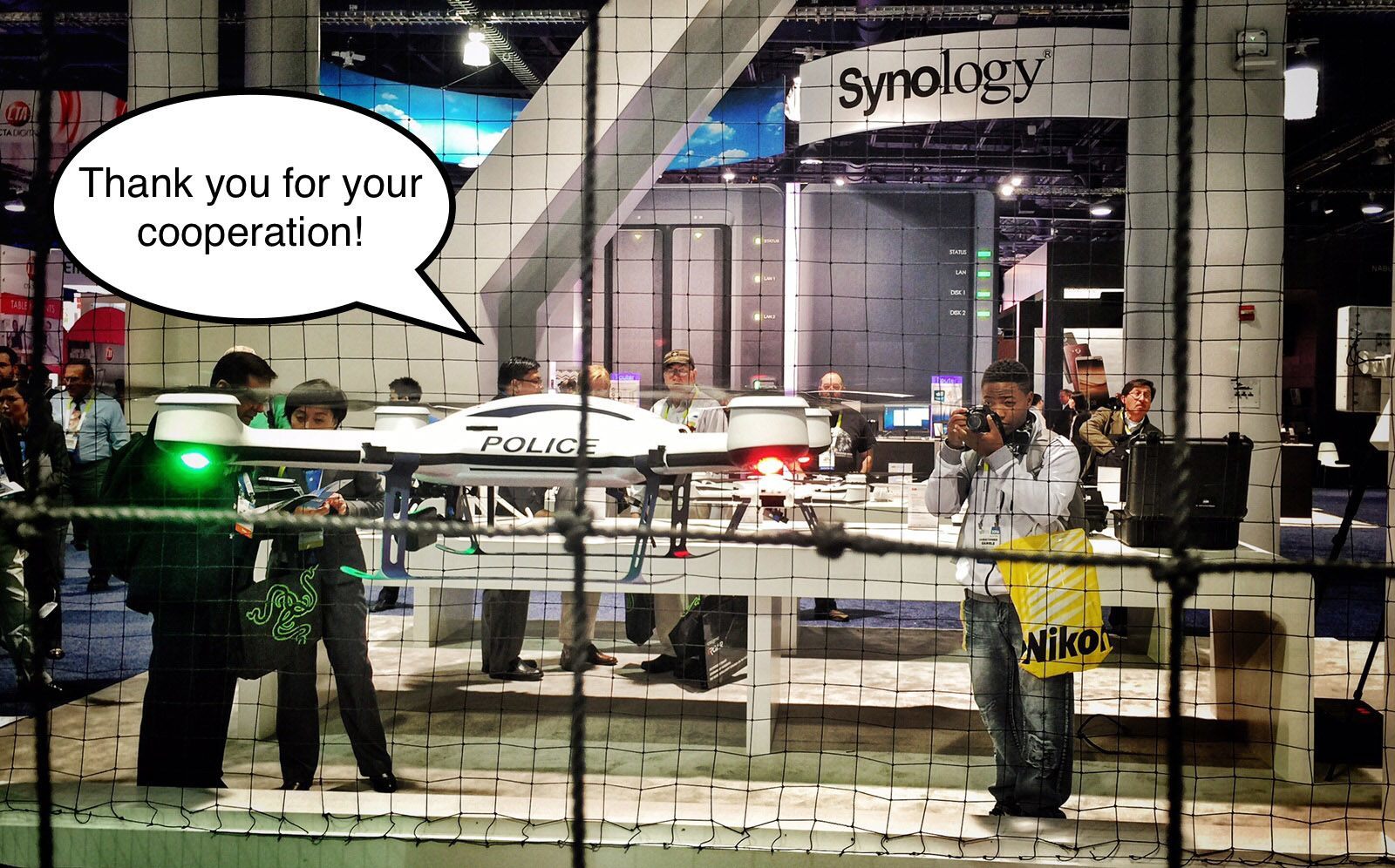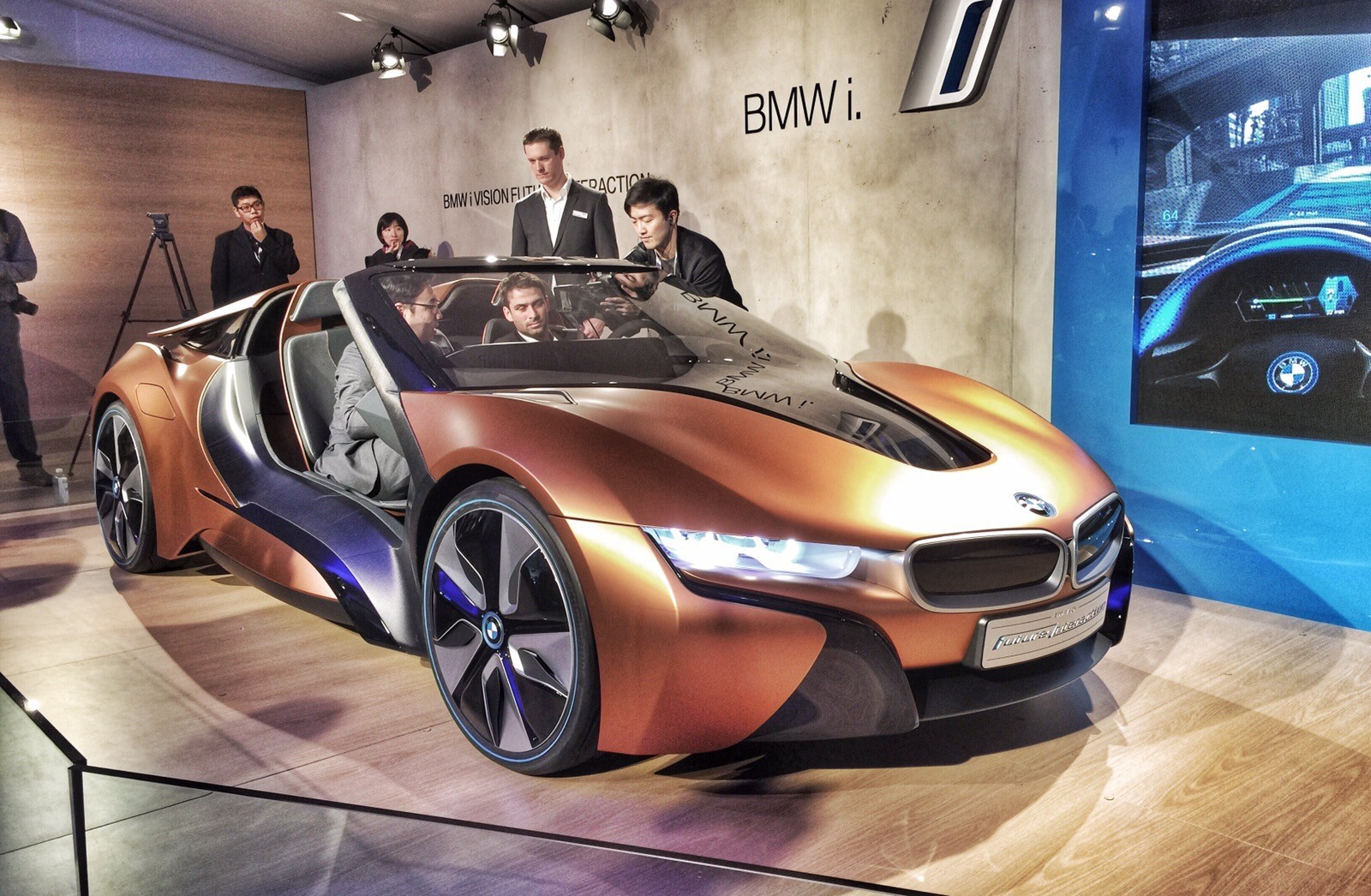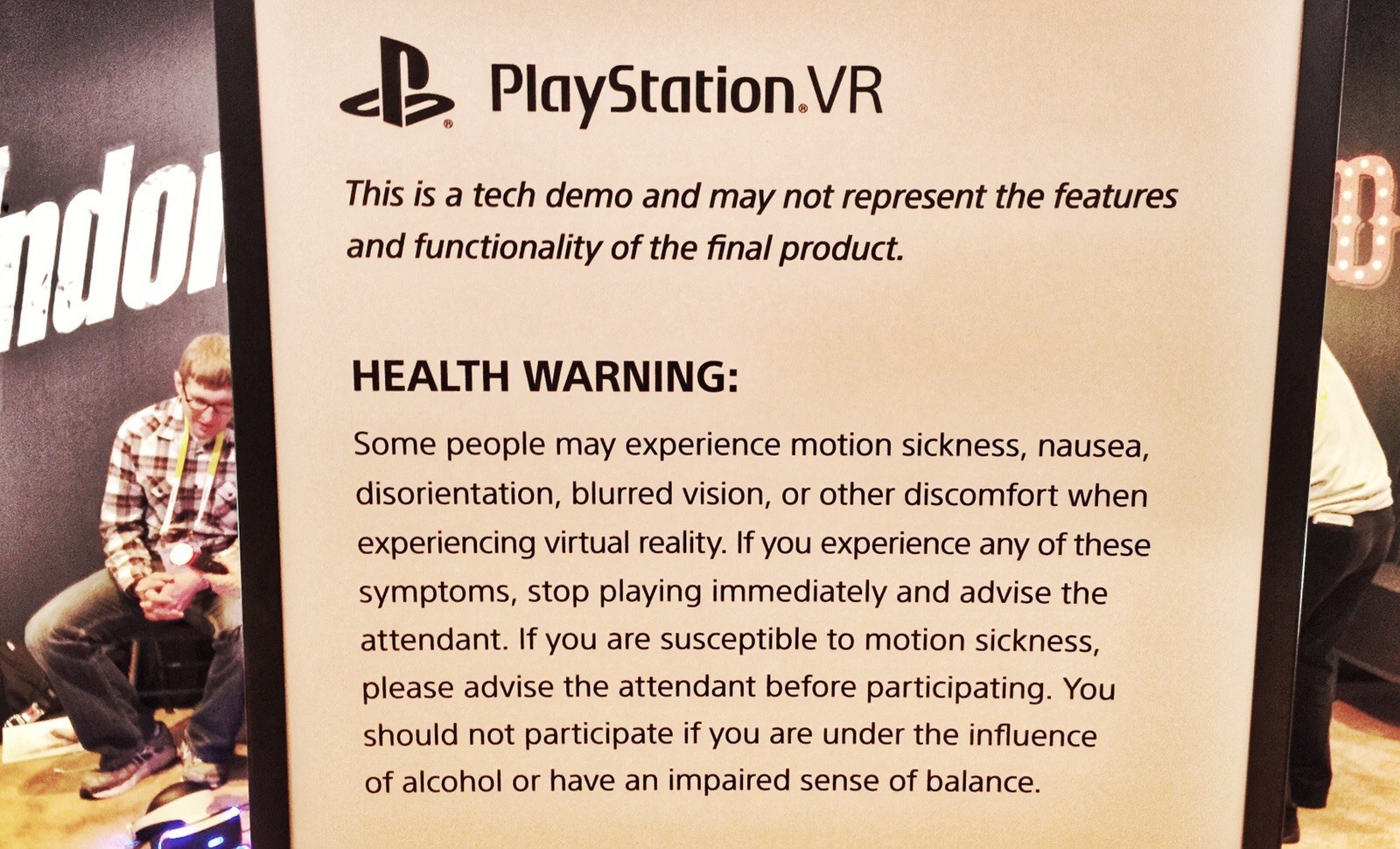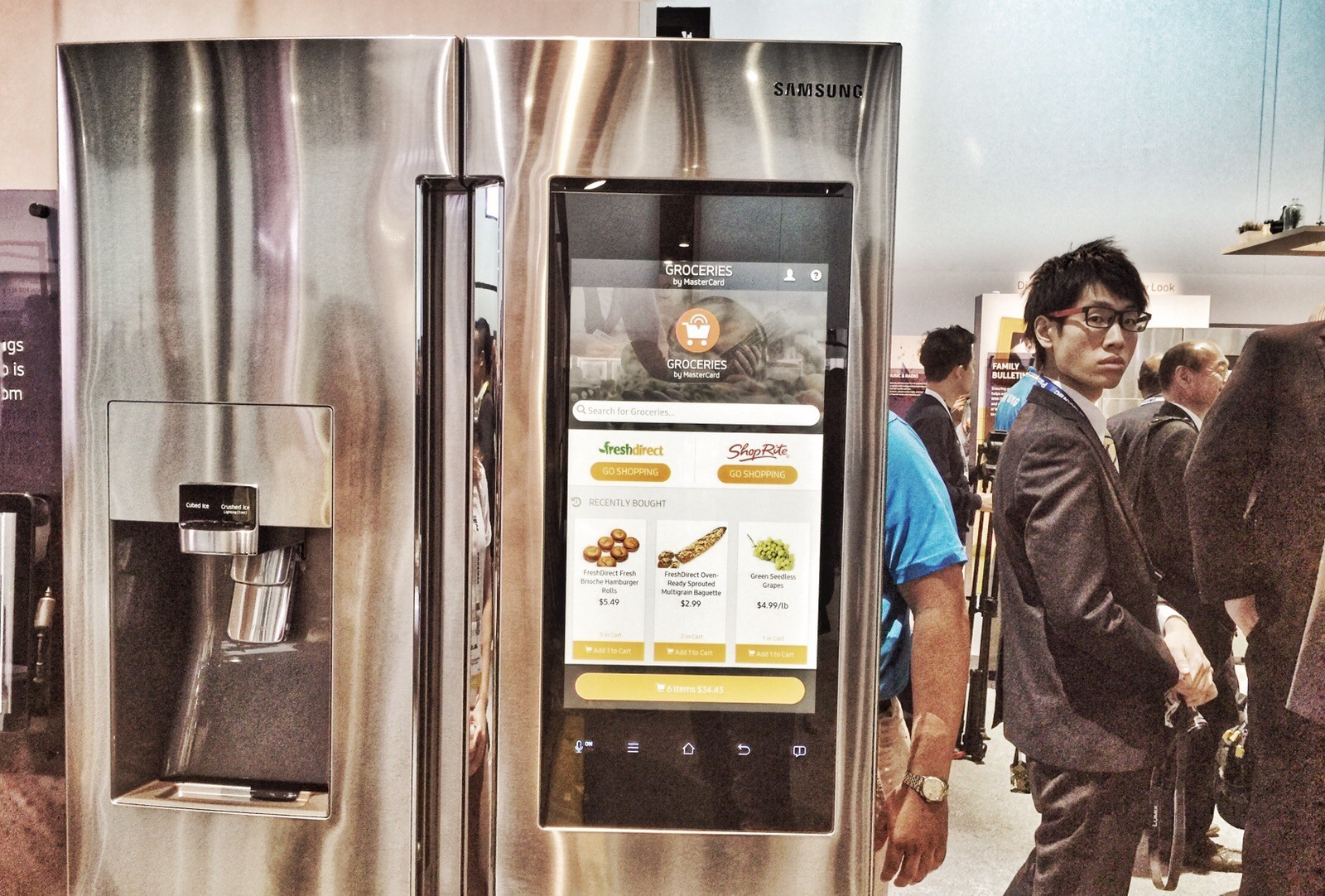CES, or the Consumer Electronics Show, is held in Las Vegas in early January. This show typically defines the trends in home electronics, technologies and software for the upcoming year.

I am not going to tell you about all the new hardware introduced at CES 2016 – we have TheVerge, Mashable or Engadget for that. Instead, I went to the show with the goal in mind to use my impressions to analyze the direction that humanity is heading into as well as how secure this inevitable connected future will be.
Judging by this year’s show, humanity has not progressed much. Whereas every second booth I’d see would boast the word ‘Innovation’, actual innovations were rarely seen around the tradeshow. For me, ‘innovation’ means you have no idea how to answer simple questions like ‘What is this thing?’ As your product is truly unparalleled and unique. When you present a real innovation, you have to think hard and choose the right words to describe it.
This is exactly how I felt when I got a chip implanted under my skin. That was new. But let’s be honest, there is nothing new in words like ‘drones,’ ‘virtual reality,’ ‘smart car,’ or ‘Wi-Fi enabled fridge’. I am not trying to undervalue these inventions, I’m just stating a fact: they are so yesterday. However, the lack of truly innovative tech at this year’s CES makes it even easier to outline the key trends on the market.
Spoiler for next week's blogpost. I'm ready for a chip that is alive. #Biohacking #BionicManDiary #security pic.twitter.com/aZBAajonO0
— Evgeny Chereshnev (@cheresh) March 6, 2015
Smart cars
One of the key trends of the season and, I think the biggest trend of this year’s CES was smart cars. A couple of years ago self-driving, software-packed vehicles were just a verbal concept, this year all major car vendors, including Ford, Volvo and Mercedes, showcased their almost-production-ready cars. These companies agree on one point: the new generation of cars would have their own opinion on pretty much anything.
A huge number of sensors provide a clearer picture of the situation on the road, inside the car, and under the hood. They help to predict everything — from routes to emergency situations. Useful data can be projected directly onto the windshield (with the help of a projection display), the dashboard or the screen of the embedded infotainment system. To avoid distractions, the system can be voice-operated. This technology has already been deployed by Ford in its Sync 3 system.
Volvo wants you to Netflix and drive https://t.co/r7AuBuNStG pic.twitter.com/1jF62YvlkF
— The Verge (@verge) January 10, 2016
The competition follows the lead: Volvo promised to quickly accomplish the mission of making its cars self-driving, not for the sake of increasing comfort, but for the higher driving safety. BMW clearly owned the automotive leadership at CES: the company deliberately packed its products with tech, making them look as if they were from the 23rd century. The in-vehicle electronics, from commodity features to the ground-breaking trip computer which can even detect that you forgot your keys and need to open the car with a smartphone, is unbelievable. However, these new BMWs have a lot of things which can break down and be challenging to repair, since they are truly one of a kind.

The general impression of this hi-tech rush is dualistic. On one hand, automotive vendors offer systems that are designed to enhance road safety and help the driver stay on the road if he somehow fell asleep at wheel. But we all know there are no such things as unbreakable systems. Systems based on software and computing (like things designed for better safety) can BOTH break down and be broken into. That means that the overall safety level in the cars of the future would be high, but if an adversary has a goal to hack a car, he would have a lot more opportunities to do that, as there are simply more things he can possibly exploit.
#BlackHat 2015: The full story of how that Jeep was hacked https://t.co/y0d6k8UE4n #bhUSA pic.twitter.com/SWulPz4Et7
— Kaspersky (@kaspersky) August 7, 2015
As for the self-driving cars, this trend is highly controversial. The self-driving car concept would do best only when there are no human-driven cars on the roads. Only then the rules would be unified and obeyed by everyone. As long as the population prefers driving on their own, accidents will happen — humans are unpredictable by nature, and prone to making mistakes.
There is one more thing which is not common to say, yet it is food for thought. In the US alone, there are hundreds of thousands of taxi drivers, and there are millions of them all over the world. As soon as robocars hit the market (which is bound to happen in 2020, when major automotive vendors start to massively produce them), all these people would start losing their jobs. There could be a dangerous social upheaval with many unpleasant consequences which have not been analyzed yet.
The brand new world of #selfdriving cars is evolving at a full speed https://t.co/sunwdxhR0n
— Kaspersky (@kaspersky) May 5, 2015
Virtual reality
Another trend that was very popular – VR. I saw dozens of companies who showcased something related to virtual reality. Some offered a walk on Mars (not accompanied by Mark Watney, to my dismay). Some showcased VR systems for education, but the majority of developers pursued gaming.
I think the best demo was provided by Sony PlayStation VR. People would line up in long queues to try on the helmet, grab two joysticks and feel like running and shooting guns. It looks quite impressive, frankly. For example, at one moment the bad guy throws a lit cigarette butt at the gamer; I watched as all people we really trying to dodge. One woman I observed literally vomited on scene, so the sign warning that our vestibular system takes virtual reality for real is no joke.

Samsung also focused on VR and demoed a virtual cinema theatre, featuring several rows of seats with a screen replaced with individual VR helmets. You sit and do whatever you like — from watching a movie to taking a virtual tour at some exhibition across the globe.
Virtual reality as a trend is very promising. As a seasoned gamer, I’d say millions of people would gladly trade the real world for the virtual reality if it looks realistic enough.
A #CES2016 visitor transforms into a #VR van Gogh using the @HTC Vive headset. #Intel pic.twitter.com/xz0tQBP2jS
— Intel (@intel) January 7, 2016
On the downside, we can get ready for a new stage of human isolation. I do not buy it when companies talk about VR as a new big thing in science, education or arts. Those who would like to learn and contemplate Van Gogh’s works are already doing that with no need for the VR tech. It’s not a question of format, it’s a question of motivation. As for the entertainment industry, it’s evidently heading into the new era with VR.
Drones
Last year drones were a dominating trend: every now and then you would stumble across a paddock with a drone hovering inside. This year stands featuring drones were less abundant, yet I managed to spot a couple of trends.
The first trend is the emergence of police drones. We can wholeheartedly admit this is the year when the real story of Terminator and Robocop starts. As soon as I laid my eyes on a police drone, I immediately recalled ED-209 and his legendary phrase: “Thank you for your cooperation!”
Israel, however, has been long using robots and drones in the defense industry. It’s still unclear when drones will be used by the police and limitary forces of other countries, but evidently it’s a matter of time. Should this trend evolve, we will see the military version of ED-209 enhanced with Rottweiler genes in no time.
Drones and #security: where are we heading? https://t.co/g9NLcoLP7Y #uav
— Kaspersky (@kaspersky) July 17, 2015
The second direction the drone industry is heading to is drones with a capacity to carry a human passenger. Whereas only one company, China’s Ehang, managed to showcase such a concept, it’s a fascinating one, especially when we consider the self-driving cars evolution we discussed above.
Aerial drones do not presuppose any involvement from the passenger’s side: a person would just choose a pre-defined location on the map, push the button and then they have nothing to do but to sit back and relax with a book or a movie on a tablet. The developers promise that the available concept model of the drone is already able to carry a passenger weighing up to 250 pounds as far as 10 miles in 20-25 minutes.
Contrary to self-driving cars, unmanned aerial vehicles would encounter far less regulatory problems: this industry is young and the rules would be unified for all. At the same time, safety remains a huge issue. Today’s drones frequently drop due to a number of reasons: ‘unexpectedly’ drained battery, cold outside temperature, loss of signal or just because they have suddenly decided to do so.
If a drone carries a passenger, the above situations will need to be completely eliminated. The developers assured that they have reached considerable progress in deploying redundant functions, creating emergency landing protocols, etc. However, their words should be proven – and the only worthy proof is the statistics on failure-free flights, which will still need to be assessed.
IoT
The Internet of Things is complex. The devices which can be considered IoT were abundant at CES 2016. At the same time, I had an impression that no one understands what exactly the IoT is.
Everyone is tempted by an ability to know more about the surrounding environment and use this information to create more efficient services. This means deploying sensors everywhere: door locks, escalators, lightbulbs, pregrancy tests, pills, wrists, cars, dogs, children…
There was one separate sub-trend: smart fridges. How vividly I remember the predictions of truly smart, digital homes I heard over the last years, with fridges connected to the Internet and ordering groceries and delivery on their own… Well, it has finally happened — sort of. Samsung showcased an array of smart fridges looking completely sci-fi. Each of them featured a display with a shopping list of groceries and a menu.

I cannot speak for others, but I would not give away my credit card number to a fridge. I don’t spend much time at home and, let’s admit it, a fridge is no Fort Knox. Security bypass is just a question of time. Personally, I would prefer to purchase different groceries instead of sticking to the same list of products, even if they are conveniently delivered to my doorstep. Or maybe I am just old-school and sentimental: attendees from China, boasting the ‘Buyer’ badges, would not leave the smart fridges alone (maybe they were just hungry, I don’t know).
I don't want to live on this planet anymore pic.twitter.com/gT8jNrEHl8
— Internet of Shit (@internetofshit) January 7, 2016
I have a question: what does all of this have to do with real life?
I think today’s IT industry is positively confused. IoT is not a goal, it’s a tool. It’s not a tool to transform the future, it’s a tool to earn money. If looking at IoT from this perspective, it all becomes pretty clear: the more the X company would know about the Y user, the more effectively the company would sell services to this user.
If that’s the real goal, then it all goes as planned: CES 2016 has witnessed the rising of all kinds of sensors measuring speed, humidity, movement, vital signals, etc. Unfortunately as a user, I have seen no IoT service I would render useful.
IoT: How I hacked my home http://t.co/CCx9eQEbL2 via @Securelist by researcher @JacobyDavid #InternetofThings
— Kaspersky (@kaspersky) August 21, 2014
I have seen the Oakley snowboard mask which displays speed and social media streams, thus distracting a user from the main thing: enjoying the ride. I have seen dozens of devices measuring heart rate and blood pressure; but it’s healthy nutrition and lifestyle that influences human’s well-being, and not the very awareness about their heart rate.
All in all, on seeing all those smart pregnancy tests and fitness trackers, along with smart showers and the likes, I would slowly go mad. The market is going through an influx of various devices collecting a lot of personal and private information. Us, users, would have to only obediently press “I agree” and keep our fingers crossed in hope that companies will play fair and not misuse our data.
Does your whole home now require anti-virus? #IoT – ttp://ow.ly/LDn78 pic.twitter.com/3d8TUUnyOw
— Kaspersky (@kaspersky) April 15, 2015
But it’s a false hope: the user data would be taken advantage of — by many if not all. None of the companies I spoke to at CES considered data security as a priority. None of them positioned security and privacy at least as a part of their mission. At the same time, all of them pursued higher revenues without even considering the impact of a data breach for their businesses.
Well… Let’s hope this ignorance would not lead neither us nor them into tricky situations — mind those smart fridges!


 Tips
Tips